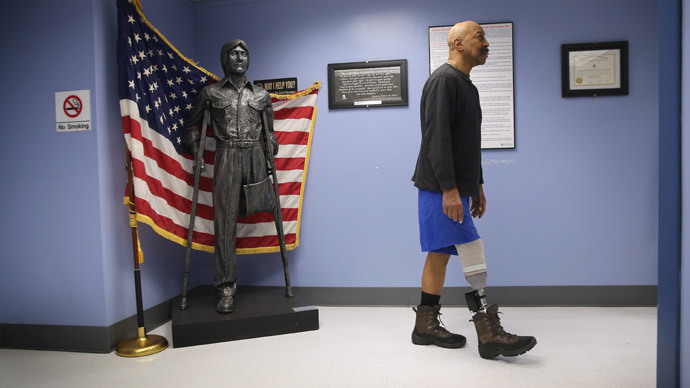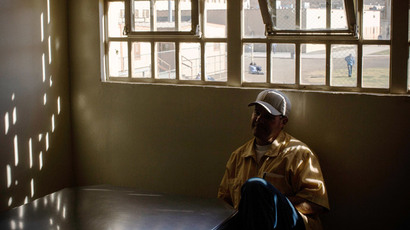Wrongful death suits have cost Veterans Affairs over $200 million since 9/11 - report

The US Department of Veteran Affairs has paid out more than $200 million in wrongful death payments to military families who needlessly lost their loved ones in the years since 9/11, according to a new report from the Center for Investigative Reporting.
Veterans Affairs (VA) is a federal government-run organization that is primarily responsible for caring for veterans after they leave the service. Along with overseeing the National Cemetery Administration, the VA also heads the Veterans Health Administration and the Veterans Benefits Administration.
Yet according to a report published Thursday, the Center for Investigative Reporting (CIR) has discovered that since the 2001 terrorist attacks, the VA has doled out payments to almost 1,000 families whose loved ones died after they were either denied treatment or released from VA treatment.
The examples are as diverse as they are difficult to read through. Recent incidents included veterans of the wars in Iraq and Afghanistan taking their own lives after they were unable to receive mental health treatment from hospitals. Others involved Vietnam veterans and, in many cases, elderly World War II veterans.
Doris Street, 86, told CIR’s Aaron Glantz that she received a $135,000 settlement in 2010 after her brother died in a VA nursing home two years earlier. Ms. Street said her brother, Carl Glaze, had served in WWII but his life ended after he slipped in a bathroom and became paralyzed from the neck down, dying nine days later.
“It wasn’t about the money, I just thought that somebody should be held accountable,” she said. “I had asked them not to leave him alone, and then they left him in the bathroom. We all get upset when these things happen.”
Negligence, wrongfully denying mental health treatment, failure to disclose relevant health information to the public, and other serious infractions are among the issues that have cost veterans their lives. More than six million men and women turn to the VA for care each year.
The issue has become serious enough to warrant a hearing with the House Committee on Veteran’s Affairs, which will investigate preventable deaths in a hearing scheduled for April 9. The same committee held a hearing on the matter last year, when they wondered why – after a Legionnaire’s disease outbreak at a Pittsburgh hospital killed six veterans and left 21 others ill – the VA regional director was given a $63,000 bonus, according to CIR.
“It’s not enough for VA to simply compensate the families of those who died,” Rep. Jeff Miller (R-Fla.) said at the same time. “In order to provide real closure for those struck by these heartbreaking preventable deaths, VA needs to hold fully accountable the employees who allowed patients to slip through the cracks.”
Secretary of Veterans Affairs Eric Shinseki responded to that assertion by saying that 6,000 VA employees were “involuntarily removed” from their jobs over the past two years.
Still, according to independent legal experts who spoke to CIR, the 1,000 lawsuits are only a fraction of the veterans who have lost their lives because of malpractice. When those families try to file suit, however, they must endure a long administrative process that can drag on for months or years only to end with no financial damages awarded to the family.
Spokeswoman Victoria Dillon told CIR in a written statement that “any adverse incident for a veteran within our care is one too many” and that those preventable deaths are not a fair assessment when considering how many veterans are properly cared for. When that does happen, she said, “we conduct a thorough review to understand what happened, prevent similar incidents in the future, and share lessons learned across the system,” adding that the VA is “committed to continuous improvement.”
Earlier this week, the VA announced it had sliced its backlog of medical claims by 44 percent since March 2013, cutting the number of processing claims delayed for more than 125 days from 611,000 to 344,000. The number of claims has skyrocketed under US President Obama after the administration enacted new rules which permit more Agent Orange claims and loosened restrictions for veterans who returned from Iraq or Afghanistan.
The agency also reversed a decision that would have cut funding to homeless veterans who left the service without honorable discharge. VA officials said they pulled the funding after conducting a legal review of the eligibility laws, but turned an about-face after pressure from community groups and questions from media outlets, specifically USA Today.
Approximately 58,000 veterans spent at least one night without a place to sleep in 2013, according to the US Department of Housing and Urban Development. Of those, about 10 percent left the military without honorable discharge and therefore faced difficulty in collecting health benefits from the VA. The motivation for the cuts, which were abandoned after being noticed, was especially confusing after President Obama said his administration would try to end veteran homelessness by 2015.
“This is federal bureaucracy at its most heartless,” Senator Patty Murray (D-Wash.), the Senate Budget Committee chairman and a senior member on the Senate Veterans Affairs Committee, told USA Today. “It defies all common sense.”














